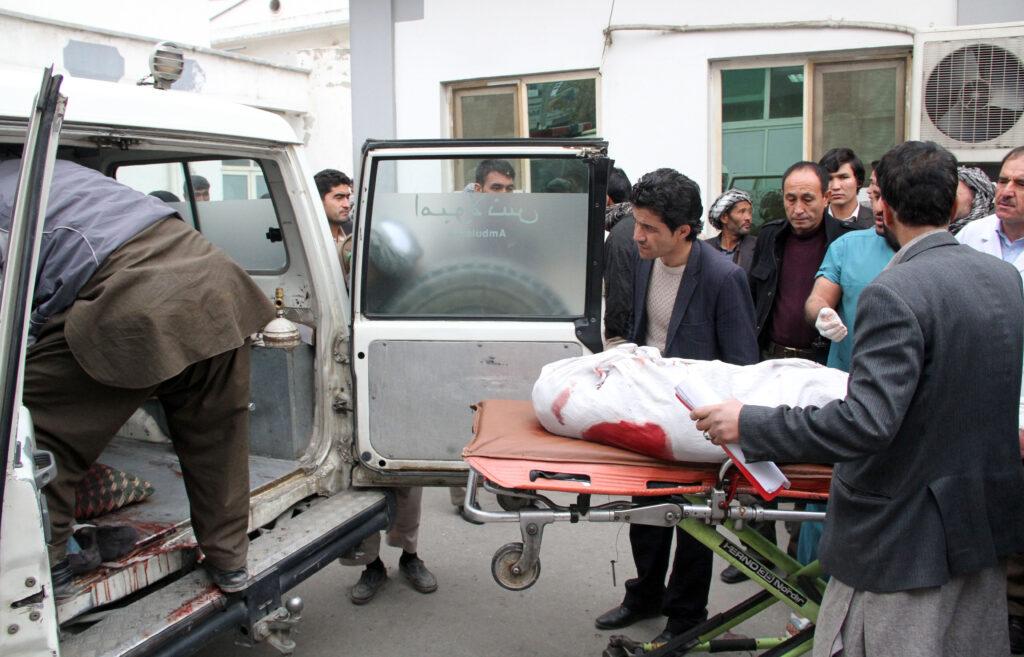KABUL, but the fatalities again soared in March when 1,500 people were either killed or wounded as the weather turned hot.
Efforts for peace have recently been accelerated as the US and Taliban representatives had so far met five times on finding a political solution to the Afghanistan conflict, but these efforts yet to reach an agreement.
Pajhwok Afghan News reports show February was the only month in the last two years when casualties fell unprecedentedly and no suicide attacks happened during the period, with the casualties’ rate declining by 43 percent.
Experts said the reason of low casualties in February was the ongoing peace talks.
Pajhwok reports based on different sources show attacks happened in 28 of the country’s 34 provinces in March when 945 people were killed and 602 others wounded.
The fatalities resulted from 127 attacks, of which 49 were carried out by the Taliban, 37 by Afghan forces and eight by foreign forces.
In February, 105 attacks happened. The statistics show attacks increased by 21 percent in March compared to February.
Last month, nine among each 15 people suffered casualties in face to face clashes, three in targeted attacks, two in explosions and one in airstrikes.
Eighteen attacks happened in Nangarhar, 10 in Faryab, Helmand and Kandahar each, nine in Ghazni and Jawzjan each and the rest 61 attacks happened in other 22 provinces of the country in March.
In March, there were no reports of casualties from Bamyan, Nuristan, Ghor, Nimroz and Panjsher provinces.
Casualties
Pajhwok reports show a total of 945 people were killed and another 602 wounded in March. Rebels, security forces and civilians were among the casualties. But Pajhwok could not compile specific casualty figures because different sources provided different accounts.
There were no reports of attacks on March 3. March 22 was the deadliest day when 181 people were killed or wounded. Most of the attacks happened on March 17.
On March 22, five attacks happened but the deadliest was in Sangin district of Helmand, where 65 Afghan soldiers were killed and 38 others wounded.
Defence analysts link the rise and fall in casualties to tactical approach toward fighting. Military experts believe greater casualties happen in more populated places in guerrilla warfare.
Atiqullah Amarkhel, a retired general and military expert, said that the warring sides were trying to intensify their attacks for leverage in the ongoing peace talks and to come to agreement on their terms.
Another reason behind the increased attacks was support from some countries especially Pakistan, Iran and Russia with the Taliban so they were able to portray that foreign forces particularly the US had failed in Afghanistan.
The increased attacks in March were due to the return of warm weather because insurgents could not move freely during winter to carry out more attacks, he said. “Warm season in Afghanistan is fighting season.”
Mohammad Zubair Arif, deputy spokesman to the Ministry of Defense, said that things changed in the ministry with the appointment of the new minister. He said aggressive and overnight operations against insurgents had increased and as a result, the rebels suffered high casualties.
“The enemies try to increase their attacks amid ongoing peace talks because they want to have more achievements, but they were unable to reach their goals due to Afghan forces sacrifices,” he said.
“Unfortunately international terrorists are also fighting in Afghanistan, for example Daesh or Islamic State (IS) is not an Afghan phenomenon, Al Qaeda is also operating here, unfortunately some of our neighbors are not good neighbors, they somehow support insurgents,” he added.
Afghan forces, supported by foreign troops, have been fighting the Taliban for the past 17 years. Past experience shows casualties and attacks surge in Afghanistan in summer and decline in winter.
In 2017, around 25,000 people suffered casualties compared to around 27,000 people killed or injured in 2018. In the last three months of 2019, more than 4,400 people suffered casualties.
Common people who are worried about increase in insecurity in warm weather ask the warring sides to agree on a ceasefire when peace talks are ongoing.
Samiullah Farooqi, a resident of Maidan Shahar, the capital of central Maidan Wardak, said: “Like me, all Afghans are hoping for positive results of peace talks. I want the warring sides to agree to a ceasefire and continue peace talks; it would prevent casualties.”
Ahmad Shoaib, a resident of Farah City, told Pajhwok he lost one of his brothers to a suicide attack two years ago. “Peace is blessing. The Afghans are being killed on different pretexts for the last four decades. Our life is really painful.”
Shoaib said each time when he enters home and see his orphaned nephews, his pain recurs. He thinks all Afghans — soldiers, Taliban or civilians — who lose relatives to the war would have the same feelings.
Shoaib asked parties to the conflict not to lose the present opportunity of peace and be ready for sacrifices to end the bloodshed by making the peace process a success story.
mds/ma
Visits: 4









GET IN TOUCH
NEWSLETTER
SUGGEST A STORY
PAJHWOK MOBILE APP